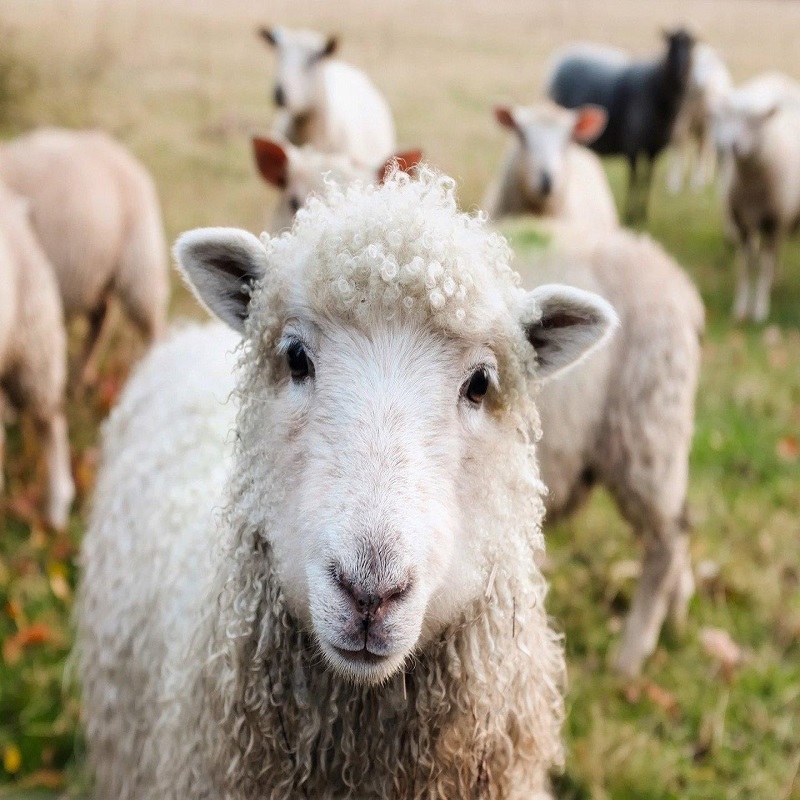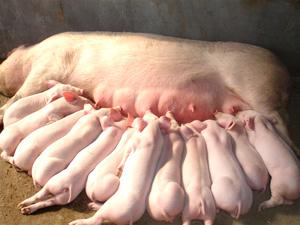Guanylacetic acid, also known as guanylacetic acid, is an amino acid analogue formed from glycine and L-lysine.
Guanylacetic acid can synthesize creatine under the catalysis of enzymes and is the only prerequisite for the synthesis of creatine. Creatine is recognized as an energy buffer, and its main function is to form phosphorylated creatine under the action of creatine kinase.
Participate in the adenosine triphosphate (ATP) cycle. When ATP energy is insufficient, phosphocreatine rapidly transfers the phosphate group to adenosine diphosphate through creatine kinase and converts it back to adenosine triphosphate.
Application in ruminants:
Adding 0.12%, 0.08%, and 0.04% guanylacetic acid to the diet of 120 barn fed Tan sheep weighing about 20 kilograms, respectively, showed that the addition of 0.12% and 0.08% guanylacetic acid significantly increased daily weight gain, intramuscular fat, and protein content, and significantly decreased carcass fat content.
The addition of 0.08% guanylacetic acid increased net meat percentage by 9.77%. By using in vitro gas production method, the effect of adding different levels of guanylacetic acid on the rumen of yellow cattle was studied. It was found that the addition of 0.4% guanylacetic acid significantly increased gas production, and the concentration of ammonia nitrogen first increased and then decreased.
Therefore, it can be inferred that adding guanylacetic acid to daily feed can improve the rumen internal environment and fermentation mode of yellow cattle.
Application in poultry:
Adding 800 mg/kg, 1600 mg/kg, 4000 mg/kg, and 8000 mg/kg of guanylacetic acid to the daily feed of broilers showed that adding 800-4000 mg/kg of guanylacetic acid to the feed significantly increased the daily weight gain of broilers, decreased the feed to weight ratio of broilers at 22-42 days of age. Adding 8000 mg/kg of guanylacetic acid improved serum biochemical indicators such as urea nitrogen, blood routine indicators, and total bilirubin There was no significant impact on major organ indicators, indicating that adding 8000 mg/kg of guanylacetic acid to the daily feed of broilers is tolerable.
Adding 200 mg/kg, 400 mg/kg, 600 mg/kg, and 800 mg/kg of guanylacetic acid to broiler feed showed a significant increase in average daily weight gain compared to the control group. The best results were achieved when the addition levels were 600 and 800 mg/kg.
To study the effect of guanylacetic acid on sperm quality in roosters, 20 28 week old roosters were selected to feed a diet containing 0%, 0.06%, 0.12%, and 0.18% guanylacetic acid. The research results found that adding 0.12% guanylacetic acid to the diet significantly increased the number of sperm, semen concentration, and sperm activity in roosters, indicating that adding guanylacetic acid to the diet can effectively improve sperm quality. Add 0.0314%, 0.0628%, 0.0942%, and 0.1256% guanylacetic acid to the daily feed of broilers, and set two control groups (control group 1 is a plant-based feed without any substance added, and control group 2 is a feed with fish meal added). The above six groups of daily feed have the same level of energy and minerals.
The experimental results show that the weight gain rates of the four groups with guanylacetic acid added and control group 2 are higher than those of control group 1, The control group 2 had the best weight gain effect, followed by the 0.0942% guanylacetic acid group; The control group 2 had the best material to weight ratio, followed by the 0.1256% guanylacetic acid group.
Application in poultry:
Adding 800 mg/kg, 1600 mg/kg, 4000 mg/kg, and 8000 mg/kg of guanylacetic acid to the daily feed of broilers showed that adding 800-4000 mg/kg of guanylacetic acid to the feed significantly increased the daily weight gain of broilers, decreased the feed to weight ratio of broilers at 22-42 days of age. Adding 8000 mg/kg of guanylacetic acid improved serum biochemical indicators such as urea nitrogen, blood routine indicators, and total bilirubin There was no significant impact on major organ indicators, indicating that adding 8000 mg/kg of guanylacetic acid to the daily feed of broilers is tolerable. Adding 200 mg/kg, 400 mg/kg, 600 mg/kg, and 800 mg/kg of guanylacetic acid to broiler feed showed a significant increase in average daily weight gain compared to the control group. The best results were achieved when the addition levels were 600 and 800 mg/kg.
To study the effect of guanylacetic acid on sperm quality in roosters, 20 28 week old roosters were selected to feed a diet containing 0%, 0.06%, 0.12%, and 0.18% guanylacetic acid. The research results found that adding 0.12% guanylacetic acid to the diet significantly increased the number of sperm, semen concentration, and sperm activity in roosters, indicating that adding guanylacetic acid to the diet can effectively improve sperm quality. Add 0.0314%, 0.0628%, 0.0942%, and 0.1256% guanylacetic acid to the daily feed of broilers, and set two control groups (control group 1 is a plant-based feed without any substance added, and control group 2 is a feed with fish meal added). The above six groups of daily feed have the same level of energy and minerals. The experimental results show that the weight gain rates of the four groups with guanylacetic acid added and control group 2 are higher than those of control group 1, The control group 2 had the best weight gain effect, followed by the 0.0942% guanylacetic acid group; The control group 2 had the best material to weight ratio, followed by the 0.1256% guanylacetic acid group.
Post time: Nov-29-2023







